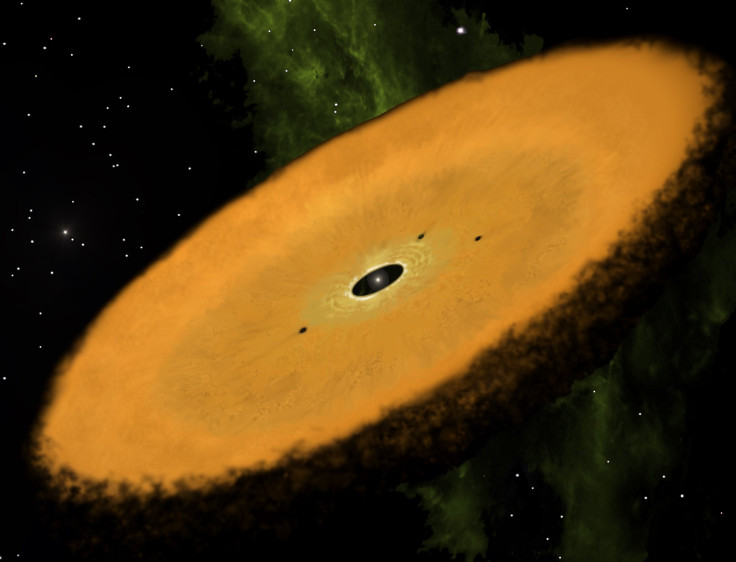NASA Collaborates With Citizen Scientists To Discover Circumstellar Disk Around Red Dwarf

The hunting ground for exoplanets — planets orbiting stars other than the sun — just became a little bigger, thanks to a NASA-led project known as “Disk Detective.” The project, which enlisted the help of eight “citizen scientists,” has successfully discovered a warm circumstellar disk around a red dwarf star located roughly 212 light-years from Earth.
“Most disks of this kind fade away in less than 30 million years,” Steven Silverberg, a graduate student at Oklahoma University and lead author of a recent paper describing the findings, said in a statement Friday. “This particular red dwarf is a candidate member of the Carina association, which would make it around 45 million years old. It's the oldest red dwarf system with a disk we've seen in one of these associations.”
The discovery is important because a huge chunk of exoplanets discovered so far have been found in disks similar to the one around AWI0005x3s — the red dwarf detected by the citizen scientists. Moreover, in addition to adding to the list of potential exoplanet sites, studying circumstellar disks, which consist of dust and debris left over from stars’ births, can also provide vital clues to how exactly planets form — a scantly understood phenomenon.
The discovery was made using the Disk Detective website, where, over almost the past three years, approximately 30,000 citizen scientists have perused data from NASA’s Wide-field Infrared Survey Explorer mission (WISE), the Two-Micron All Sky Survey project, among others, and performed roughly 2 million classifications of stellar objects.
“Without the help of the citizen scientists examining these objects and finding the good ones, we might never have spotted this object,” Marc Kuchner, an astrophysicist at NASA’s Goddard Space Flight Center in Greenbelt, Maryland, who leads Disk Detective project, said in the statement. “The WISE mission alone found 747 million objects, of which we expect a few thousand to be circumstellar disks.”
© Copyright IBTimes 2024. All rights reserved.






















